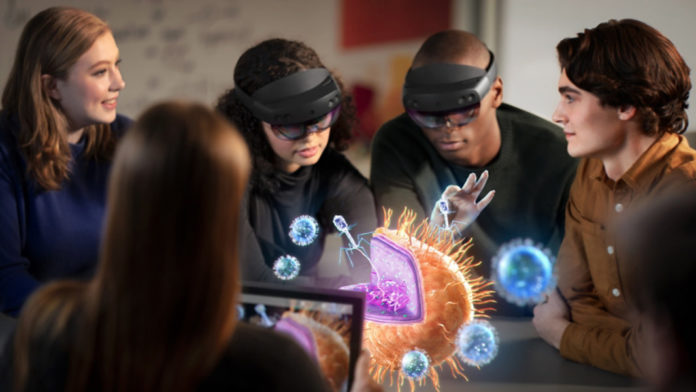Medical and nursing students at NUS Yong Loo Lin School of Medicine will be using three-dimensional holographic technology from Microsoft starting in April 2022, to help them learn certain medical procedures and study anatomical structures.
Dubbed Project Polaris, the collaboration among NUS Medicine, the National University Health System of Singapore, and Microsoft adds mixed reality to the learning experience through the Microsoft HoloLens 2.
The HoloLens 2 will be used to project three-dimensional holograms to give medical and nursing students a visual appreciation of actual clinical scenarios in practice. The suite of instructional software developed by the team from NUS Medicine and Microsoft Industry Solutions provides 3D, mixed reality technology which will be used to help students practice clinical procedural skills such as inserting a cannula, as well as inserting catheters in male and female urinary tracts.
Alfred Kow, assistant dean for education and coproject lead, said Project Polaris comes with three levels of difficulty, with a goal to train and provide sufficient direction to allow students at varying levels of competence to achieve the highest standards of clinical practice in a safe space.
“With the ongoing pandemic, virtual reality and mixed reality has been identified as a must-have tool for teaching and learning at onsite and remote environments,” said Kow.
Polaris is part of a larger programme called Project Horizon, which consists of more initiatives like Project Delphinus and Project Mira. These aim to train students in clinical soft skills and clinical anatomy respectively, positioning NUS Medicine as the first in Southeast Asia to introduce holographic mixed reality as a teaching tool to train medical and nursing students.
The medical and technical expertise of NUS Medicine and Microsoft are expected to pave the way for the development of a niche technological competency, in which clinical training tools can be developed to introduce realistic clinical scenarios for use in medical education.
“From delivering better healthcare experiences at the frontlines to helping neurosurgeons keep patients better informed of what could happen during their surgeries, technology has been an empowering tool for healthcare workers as they protect and save the lives of patients,” said Richard Koh, national technology officer at Microsoft Singapore.
















